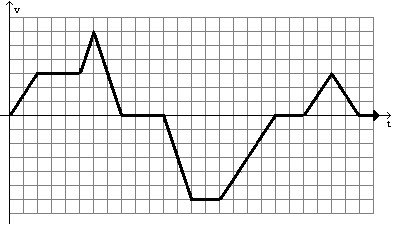Differentiate implicitly to find d2y/dx2.x + xy + y = 2
A. 
B. 
C. 
D. 
Answer: B
You might also like to view...
Provide an appropriate response.Find the direction in which the function is increasing most rapidly at the point P0.f(x, y) = xey - ln(x), P0(-4, 0)
A.  i -
i -  j
j
B.  i -
i -  j
j
C.  i +
i +  j
j
D.  i
i
Solve the problem.A triangle has a base of length 2x + 3 and a height of x + 3 and has an area of 27 square units. Find thebase and height. (A =  bh)
bh)
A. base = 18 units; height = 3 units B. base = 9 units; height = 6 units C. base = 3 units; height = 9 unit D. base = 9 units; height = 3 units
Use the accompanying graph of a particle moving on a coordinate line with velocity v = f(t) in ft/sec at time t seconds. The axes are marked off at one-unit intervals. Use these terms to describe the motion state: moving forward/backward, increasing/decreasing speed, and resting. Recall that speed =  .
.  Give the interval(s) when the speed of the particle is increasing.
Give the interval(s) when the speed of the particle is increasing.
A. (0, 2), (5, 6), and (11, 13) B. (0, 2), (5, 6), (11, 13), and (21, 23) C. (0, 2), (5, 6), and (21, 23) D. (0, 6), (11, 15), and (19, 23)
Let A = {1, 3, 5, 7}; B = {5, 6, 7, 8}; C = {5, 8};  and
and  Determine whether the given statement is true or false.U ? A
Determine whether the given statement is true or false.U ? A
A. True B. False